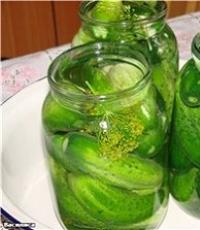Gutter from plastic bottles. Do-it-yourself drain from the roof
Beginning summer residents often face a lack of funds, since a lot of money has to be invested in the arrangement of the site and the house. Therefore, some designs can be assembled from improvised waste material. Of course, they will not last long, but they will help out for the first time. Let's consider how to assemble a drain from plastic bottles.
The drainage system is an important element of any building, even if it is a small house. summer cottage. The main function of this system is to drain rain and melt water from the walls and foundation of the house, if you do not install a drain, the building will last much less.
A high-quality roof drain is assembled from special elements made of plastic or galvanized steel. But, as a temporary option, you can make a drainage system from plastic bottles.
Training
First of all, you need to take measurements from the roof to find out how many bottles you have to use.
Advice! For calculations, it is worth accepting that the “working part” of the bottle, taking into account the necessary overlap, is approximately 20 cm. Therefore, to calculate the required number of elements, you need to divide the length of the cornices by 20.
What container is suitable?
To do drainage system roof, you can use containers with a capacity of 1.5 and 2 liters. Basic requirements for the "material":
- the container must be of the same size and shape;
- these should be even bottles of a cylindrical shape without recesses and relief patterns (the presence of a relief creates hydraulic resistance and contributes to the rapid clogging of the drainage system);
- the color of the container is an unimportant moment, however, drainage from dark bottles looks more beautiful, since all the dirt that flows from the roof is visible in the transparent spillway. You can, of course, use multi-colored containers, this will not affect the quality of drainage, but such a drainage system will not decorate the house;

- bottle labels must first be removed, because if this is not done in advance, then soon the paper will begin to lag behind and hang in ugly tatters.
Advice! When planning to assemble a spillway from plastic containers with your own hands, you need to prepare the “material” with a margin, since in the process of work you can accidentally damage the prepared elements.
What else is required for work?
To collect the drainage of water from the roof with your own hands, in addition to the required number of bottles, you will need to prepare:
- sharp knife or scissors for cutting material;
- furniture stapler with staples for connecting individual elements into a gutter;
- wire on which the plastic gutter will be attached to the roof covering;
- a drill to make a hole in the roof covering;
- soldering iron or awl for making holes in plastic;
- for greater reliability, it is also worth using a sealant, however, sealing will greatly increase the time spent on construction, and since the structure is going to be temporary, you need to decide whether it is worth messing with it for a long time.

Mounting
The work is carried out in two stages:
- collect and fix the gutter on the roof;
- build a vertical drain for water.
Gutter Assembly
To assemble the gutter, you need to cut off the bottom and neck of the bottle so that you get an even cylinder. Then the resulting workpiece must be cut in half to get two semicircular elements. Having prepared a sufficient number of blanks, you can start collecting:
- two parts are folded with an overlap of 1.5 cm wide;
- fasten with staples using a furniture stapler or make holes in the details with an awl and fasten them with a piece of wire;
- additional sealant may be used.

Repeating the operations described above, it is necessary to assemble the gutter of the required length. Then you will need to fix it on the roof. It is most convenient to hang a plastic gutter on a wire by making holes in the slate and in the gutter itself. In this case, it is necessary to ensure that the gutter is suspended with an inclination to the installation site of the funnel.
Vertical part of the system
The spillway funnel and downpipe are also made from bottles. To make a funnel, the neck is cut off from the container and, having cut a hole, we connect the funnel to the gutter.
We collect the drainpipe from the same bottles, cutting off the bottom and neck from them so that we get a part with a narrowed edge. We insert the blanks one into the other, forming a pipe.
Advantages and disadvantages
The main advantage of such a roof drain is its low cost and the fact that it is easy to assemble it yourself. The drain works quite efficiently, of course, if extreme operating conditions with hurricane winds and tropical showers are not expected. The disadvantages are the unreliability of the system and its short service life. It is unlikely that a bottle design will last longer than one year.
So, if necessary, quickly and as cheaply as possible to assemble a gutter system for the roof, you can use ordinary plastic bottles as a building material. It is not difficult to assemble such a weir, the work will not require time and labor. However, the construction of plastic containers is unreliable and short-lived.
The drainage system of the house is an integral and necessary part of it. Today, making a drain with your own hands is not a big and difficult problem, since manufacturers offer a large number of options. But not all consumers are ready to buy them.
For some, this is an unattainable goal in terms of financial costs. Therefore, among them there are those who give their preference makeshift designs made from scrap materials. For example, from sewers plastic pipes or ordinary plastic bottles. Let's take a closer look at the second option - a drain from plastic bottles, as the most unusual and non-standard.

We prepare materials for the drain
So, the main material for a home drain is a plastic bottle. Which bottle is right for you?

Attention! The number of required plastic bottles is determined by the standard calculation. But it is necessary to make a supply of material more than necessary. In the process of carrying out installation work, the container may deteriorate, especially when cutting and installing it.

- The horizontal part of the system is calculated.
- Vertical.
- Shaped products.
- fasteners.
The horizontal part is calculated based on the length of the cornice. In this case, one must take into account the fact that the entire bottle is not installed on the horizontal part of the drain. She is cut in half. It turns out that if, for example, the length of the cornice of your house is 10 m, and the working part of the plastic bottle is 20 cm (based on its overlapping), then the number of bottles will be equal to:
10:0,2:2=25 bottles.

As for the vertical part, everything will depend on the installation height of the drain risers and their number. For example, the height will be 4 m, which means that one riser will require: 4: 0.2 = 20 bottles. If speak about small house from gable roof, then these are four risers, which means 20x4 = 80 bottles per risers. In total, you will need 105 pieces of plastic containers, taking into account the stock within 10-15%, the final result will be 115 or 130 pieces. Collecting such an amount is not a problem today.
To carry out the installation process of a plastic bottle roof gutter system with your own hands, you will need additional materials and a few simple tools.
- Wire.
- Sealant, preferably silicone.
- A stapler, better than a clerical one, because a construction stapler is more powerful, it will simply break thin plastic with its staples and pressure.
- A sharp knife and scissors, with which the plastic container will be cut.
- Drill needed to drill holes for fasteners.
- Roulette and pencil.
- Fishing line.

Do-it-yourself installation of a drain from plastic bottles
The installation process is divided into two parts:
- Assembly of horizontally laid gutters.
- Assembly and fastening of risers.
Installation of the horizontal part of the drain
First of all, plastic containers must be prepared, or rather, do-it-yourself blanks made from it desired shape and length. Therefore, the neck and bottom are cut off from the bottle, leaving only the cylindrical part, which is cut lengthwise with scissors, making two identical halves. That is, from one cylindrical billet we get two gutters.

You can connect the gutters in several pieces right there on the ground or collect them one by one at the top under the roof eaves. If the first option is selected, then the gutters are overlapped with respect to the two edges with an offset of 15 mm. The two elements are fastened with a stapler and metal staples. If they are not available, then with your own hands you can make holes with an awl and fasten two trays with wire. It is recommended to apply a sealant to the overlap area.
Now all the work is transferred to the top. The main condition for a well-functioning horizontal part of the drainage system is its slope towards the riser. Here there is a minimum indicator of the angle of inclination, it is equal to 2%, that is, the difference in the laid tray line should be 2 mm per meter of its length. To do this, at the highest point of the drain, it is necessary to screw in a self-tapping screw, and already from it towards the riser, draw a fishing line with a calculated difference. A self-tapping screw is also screwed in here, on which the wire is wound in the form of a loop. This will be a kind of bracket.
In the same way, the wire is installed on the upper self-tapping screw. Now, between the two fasteners, exactly the same ones are installed every half a meter. Next, prepared gutters are laid on the brackets.

Do-it-yourself installation of the vertical part of the drain
As for the shape of the elements of this part of the drainage system, there is a slight difference here. First, the funnel. This is the top of a plastic bottle with a neck that has been cut so that it actually forms a funnel. The neck is too narrow, so it is cut off, making a larger wide opening. But do not cut off too much, because it must fit right into the cylindrical profile of the bottle itself.
Drainage in a private house is one of the main components of a comfortable outdoor recreation.
It is worth saying that most of the land plots suffer from waterlogging, which leads to the destruction of the foundation of the building, and to all the ensuing consequences.
If you notice an excess of moisture in your area, then a do-it-yourself drainage pipe will come to the rescue.
drain pipe
This device is a system of underground channels or pipelines that remove excess moisture, forming an artificially created watercourse in the soil.
Water entering the created underground channels is collected in special storage tanks and then discharged outside the site.

Underground channel system
Drainage pipe from plastic bottles
Very often people face the problem of high cost building materials and the impossibility of acquiring them, so they have to look for other alternative and less expensive options.
For example, a do-it-yourself drainage pipe made from plastic bottles is great option create a drying system.
The thing is that plastic bottles are made from polyethylene that has undergone special processing, which makes them very durable with a service life of 50 years.

Drainage from plastic bottles
But, there is one thing, but such drainage is performed only according to closed type. So, let's look at the arrangement of a drainage system using plastic bottles.
Actually there are two options:
- grid;
- natural outlets.
Both options are quite popular and in demand, so it is worth considering each of them separately.
A distinctive feature of the options is the way the bottles are stacked.
That is, with the “mesh” option, plastic bottles are cut at the hole in the back, into which the neck of the next bottle is inserted, thereby forming an airtight drainage system.
The method of natural withdrawal is based on the fact that bottles are installed in the trench, forming an air cushion.

Natural withdrawal method (bottle in bottle)
Step-by-step instructions for creating drainage from plastic bottles using the mesh method
- along the perimeter of the site it is necessary to dig a trench, approximately half a meter deep, but this figure is not a pattern, since in without fail soil type and groundwater depth should be taken into account;

Trench around the perimeter of the site
- then they equip the pipes from the bottles, namely, in the back of the container is cut out bottom, and the next bottle is inserted into it with the neck forward;

This is what the bottles look like inside each other
- after that, the bottom of the trench must be sprinkled with sand, this is very important so that water does not pass through the drainage;

Sprinkle the bottom of the trench with sand
- then pipes from bottles are laid at the bottom of the pit. It is better to install several rows to form a dense and reliable system. From above, the created structure must be sprinkled with sawdust or turf for insulation. If possible, then it is possible to give preference to geotextiles, which are an excellent insulation for such communications;

Pipes from plastic bottles
- the trench must have access to a well or a specially created reservoir on the site. In the case of a reservoir, you do not need to think about pumping water, since such water is used to water the garden.
Drainage sewage, which is installed by natural drainage, resembles a river system, namely, having a channel and tributaries.
This option is more suitable for areas with swampy soils and will provide an effective withdrawal of water from anywhere in the garden.
The installation of such a system is as follows:

A gutter is a system designed to collect and drain storm and melt water from the roof of a building in such a way as to prevent it from entering the facade, foundation and blind area. The presence of a drainage system allows you to protect these structural elements from premature destruction, extending their service life.
Materials for the device of a drain
The need for drainage is undeniable. However, often in the conditions of private housing construction, when financial resources are always limited, many future owners, in order to save money, perform a drainage device with their own hands. In this case, two materials are most often used - galvanized steel and sewer pipes from polyvinyl chloride.

In both cases, the cost of the source material is quite high. Therefore, for even greater savings, some domestic craftsmen use improvised materials for the manufacture and installation of drainage systems. It can be various lumber, drywall sheets left after finishing work, and much more. But the most commonly used raw materials for the drainage system are ordinary plastic bottles, which, if desired, cannot be obtained. special work. As a result, it is quite easy to make a drain from plastic bottles.

To drain even a small private house, you will need a fairly large number of bottles. In this case, it is desirable to choose containers of the same size and color, without dents and other deformations. Dark brown bottles are most often used, as they look attractive, while hiding debris and leaves that have fallen into the drainage system.
To fasten gutters and pipes made from bottles, you will need wire, preferably with an aluminum or galvanized coating to avoid corrosion. In addition, you will need plastic brackets, which can be bought ready-made, since their price is low.
Necessary tool and material preparation
For the manufacture and subsequent installation, you will need very few tools. Main part preparatory work will be carried out with scissors, which must be sharp enough. You can also use a regular clerical knife, which cuts the plastic from which the bottles are made without any problems.
Main component downpipes the middle parts of the bottles will serve. Their length should be approximately 15-20 cm. The bottoms of plastic bottles will also be used in the drainage from the roof as plugs.
Another tool necessary for making a gutter system with your own hands is a special stapler for furniture. As an alternative, you can use a clerical one, but large enough to be able to pierce the plastic of the bottles. The width of the staples used by the stapler should be approximately 10-12 mm.
To attach the brackets to a wall or roof, you will also need a screwdriver, which, if not available, can be replaced with a conventional drill.

Making a drain from plastic bottles with your own hands
The manufacture of a drainage system from a roof from plastic bottles consists of the following successive steps:

An example of such a system, made by hand from improvised materials, is shown in the following video:
Conclusion
Making a drainage system from improvised materials with your own hands will allow you to get a fairly reliable working structure with a fairly pleasant experience. appearance. At the same time, a significant part of the financial resources will be saved, which can be redirected to other work.

Sergey Novozhilov - roofing materials expert with 9 years of experience practical work in the field of engineering solutions in construction.
A do-it-yourself drain from plastic bottles is a good option if it is not yet possible to build a more solid structure to drain water. He will be able to successfully serve for more than one month, and the owners will not have to urgently seek funds for its construction.
Why do you need drains
When building a residential building, the removal of water from the roof must be given increased attention. This allows for a much longer service life. roof structure. A properly arranged drainage system will protect the foundation from excessive moisture, and will also prevent moisture from accumulating on the surface of the basement and on the walls outside.
Before proceeding with the manufacture of the gutter, draw at least the simplest drawing of the future design - this will greatly help you in its manufacture. Don't forget to plan for a slight slope of the gutter. Then you need to start calculating the approximate amount of plastic containers that you will need. Measure the bottles you will make from and calculate their number.

On modern residential buildings, the owners prefer to install plastic drainage systems. They are able to seriously compete with metal ones, since with very similar working properties they are much cheaper, more convenient to install and transport.
A properly executed water drainage system also has an aesthetic function, providing the building with a beautiful finished appearance. IN decorative design at home, this is an important detail: it seems to emphasize the transition from the pediment to the facade, from the roof structure to the wall surface. When the drains are not installed correctly, the area adjacent to the house may be flooded with excessive rainfall. Drainage at the building can be both organized, where special drainage gutters are provided, and unorganized, when water flows from the roof as it pleases.
To protect the walls from precipitation, it is necessary to make a drain. Cut off the neck of one of the bottles, but do not touch the bottom. Make a hole on the side of the received part - it will have to fit a gutter that passes under the roof and collects rainfall.
Back to index
Plastic bottles for the construction of a drain
After beverage manufacturers began to use plastic containers, real scope opened up for the imagination of craftsmen.

A lot of useful and pleasant things can be made from plastic bottles: garden decorations and funny toys, ladies' trinkets, furniture and chandeliers, even garden houses from bottles are not so rare. Home craftsmen can easily make a good drainage system from plastic containers. Any summer resident accumulates a lot of plastic bottles. If there are not enough, you can ask your neighbors for them. To understand exactly how much you need, measure the perimeter of the house under the edge of the roof and wall in height.
Bottles are better to choose those whose capacity is 1.5 liters. Their shape is almost like a cylinder. There should be no bends in the middle of the bottles. To work, you will need the following tools:
- stationery stapler (preferably furniture) and staples to it;
- thin wire;
- scissors;
- drill;
- burner to make holes in the plastic.
Back to index
How to collect a drain from bottles?
Prepare bottles for work. Soak them for a while in water with a little soap so that the paper labels get wet and fall off. Do not neglect this part of the work: there is nothing good in the fact that they will gradually peel off and hang from the finished drain like rags. At a plastic bottle, you need to cut a cylindrical part in the middle, then cut it lengthwise on one side. You should end up with a rolled up piece of plastic. Do this several times until you have the desired number of pieces.
The resulting parts overlap and secure with a stapler. For reliability, it is possible to make holes along the edges of the parts and pass the wire through them. These holes can be made along the very edge, and to be sure, they can also be covered with something.
When a part of the drain is assembled, you can fix it in place. IN roofing material drill through holes at regular intervals, make the same holes in the gutter using a soldering iron or a burner. Calculate the distance between the holes so that when fastening they are opposite each other. Attach the gutter to the bottom of the roof and thread wire through the holes to pull them together. Each time, you will also have to wrap the plastic with wire so that it does not lose its shape under the weight of water.
On a few other bottles, cut off both the neck and the bottom to make a cylinder. Parts formed in this way, insert one into the other and fasten together. Then insert the upper end of the resulting structure into the plastic cylinder that ends the gutter. You can only cut off the bottom, but do not touch the neck. Put the parts upside down - you get a drainpipe.
When all the parts are assembled and fastened together, the drainage device can be considered complete. Even a person who is not particularly versed in construction is capable of making such a design. But it should be noted that the arrangement plastic drain can be considered only temporary, and at the first opportunity it is necessary to replace it with a more reliable material.





